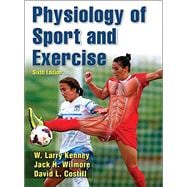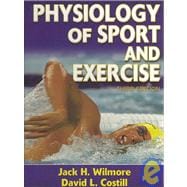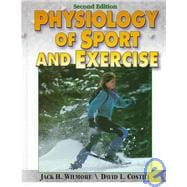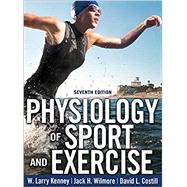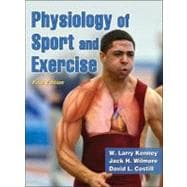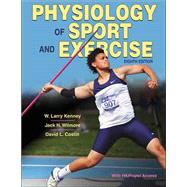Physiology of Sport and Exercise w/Web Study Guide-4th Edition

Physiology of Sport and Exercise w/Web Study Guide-4th Edition
- ISBN 13:
9780736055833
- ISBN 10:
0736055835
- Edition: 4th
- Format: Package
- Copyright: 11/09/2007
- Publisher: Human Kinetics
- Newer Edition
Rent
Sorry, this item is currently unavailable.
Note: Supplemental materials are not guaranteed with Rental or Used book purchases.
Extend or Purchase Your Rental at Any Time
Need to keep your rental past your due date? At any time before your due date you can extend or purchase your rental through your account.
Summary
The leading textbook for undergraduate exercise physiology courses, Physiology of Sport and Exercise, is back in an updated fourth edition that is better than ever after extensive external reviews of the previous edition by nine content experts. Renowned authors Jack Wilmore and David Costill add the expertise of W. Larry Kenney to bring a fresh perspective to the organization and content of the fourth edition.Building on the positive feedback of previous editions, Physiology of Sport and Exercise, Fourth Edition, presents the complex relationship between human physiology and exercise in a format that is more comprehensive for students than other comparable texts. Ease of reading and understanding is the cornerstone for this popular text, and students will experience a depth and breadth of content balanced with unique and effective learning features:-Online learning. The text is automatically packaged with an access code for the online student guide. With the inclusion of the access code in the text, students will be reminded to access the Web site more readily. The convenient Web site format of the student guide allows students to practice, review, and develop knowledge and skills about the physiology of sport and exercise.-Accessible layout. The book is divided into seven parts, each with opening text that briefly describes the contents of the chapters in that part. Chapter outlines with page numbers help students locate material, including the related online study guide activities.-Keys to comprehension. In each chapter, key points and key terms are highlighted. The key terms are listed at the end of the chapter and defined in the glossary, thus increasing students'opportunities for recall, transfer of information, and self-testing.-Review and reflection. Review boxesscattered throughout each chapter remind students of the major points presented. Study questions allow students to test their knowledge of the chapter's contents. Reminders of available study guide activities encourage students to explore additional learning opportunities.-Reference and extended study. A comprehensive glossary and a thorough index help students navigate both the text and subject matter. Plus, a listing of references and selected readings provide additional information about topics of special interest.-Abbreviations and conversions. A list of common abbreviations on the inside front cover and a list of conversions on the inside back cover of the text provide a quick and easy reference for students while they complete labs and assignments. In an effort to reduce "backpack bulge," the fourth edition has been carefully streamlined to offset the addition of new chapters or pages. Updated research, modernized artwork, and a reorganization of material provide a focused and effective presentation of concepts within a slightly smallerand lightertextbook. Chapters regarding nutrition and body composition are now combined to reduce information overlap, and references and selected readings from each chapter are grouped at the end of the text.The authors, all distinguished researchers and past presidents of the American College of Sports Medicine, combine their expertise to deliver a level of technical content superior to that in previous editions with the inclusion of new and updated topics:-New information regarding exercise training principles and the adaptations in muscle, hormonal control, neural control, metabolism, and cardiorespiratory function with both resistance training and aerobic and anaerobic training-A more in-depth presentation of the body's adaptations in hot and cold environments and at altitude-Updated content on how general principles of exercise and




